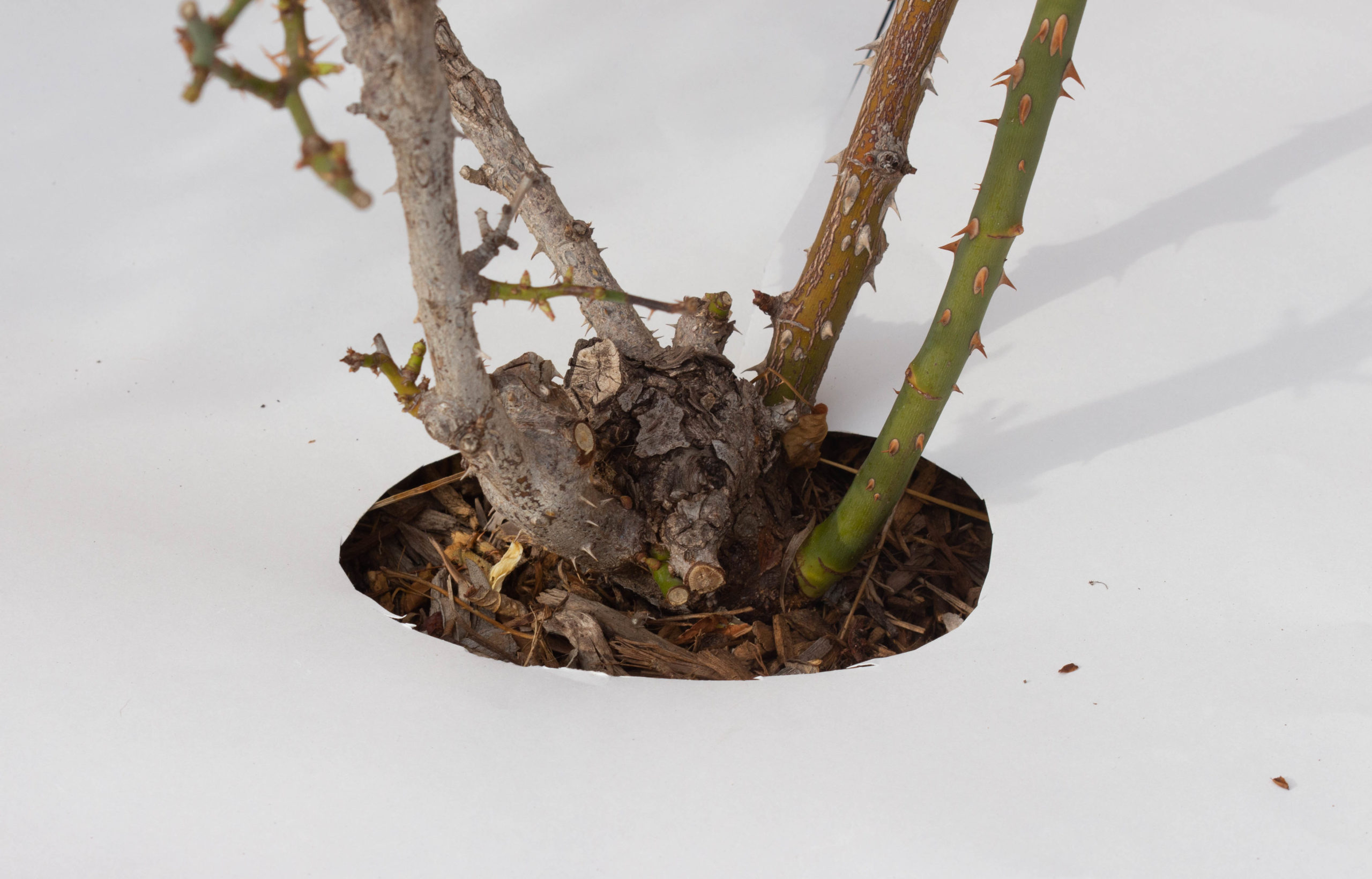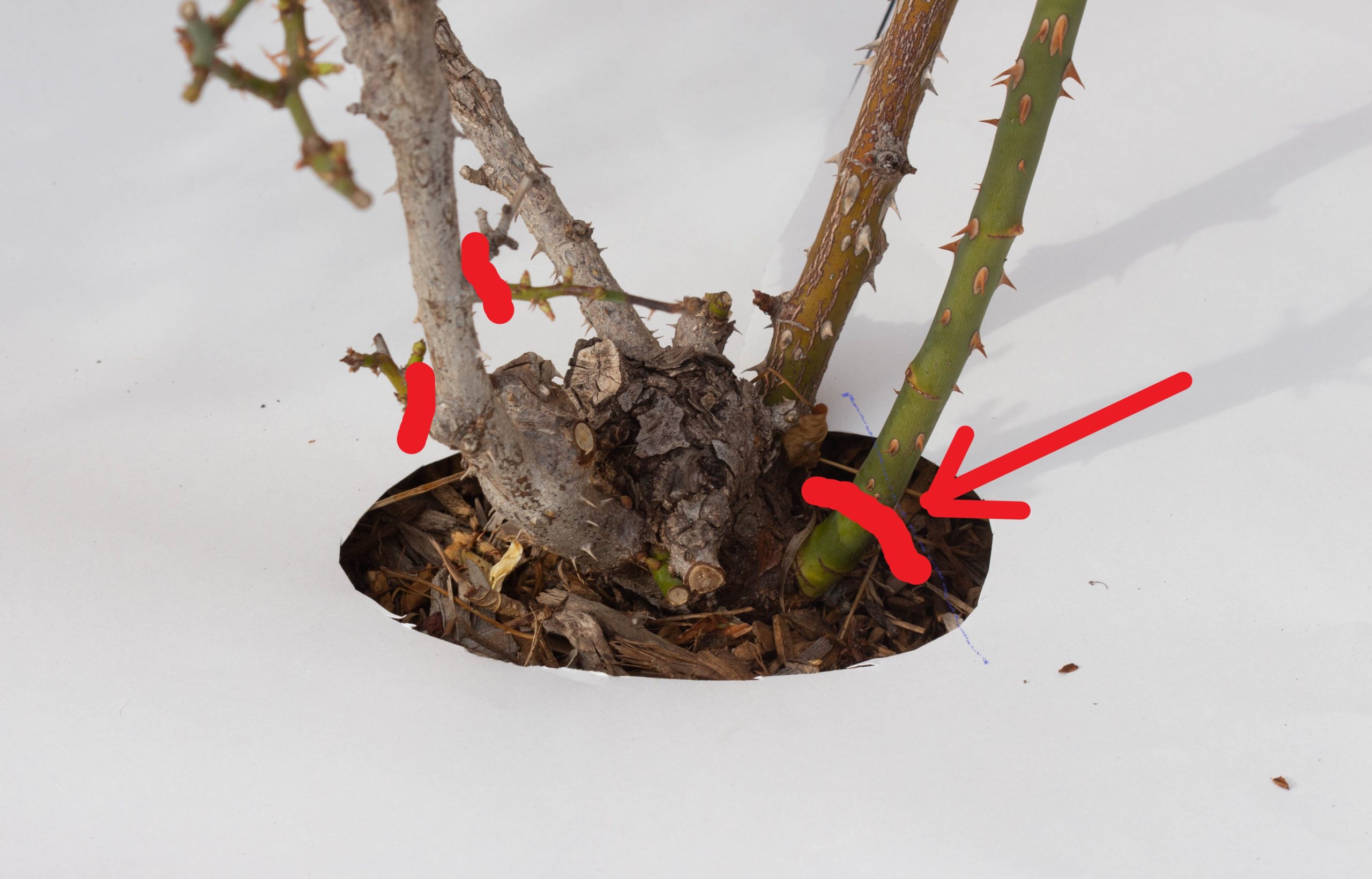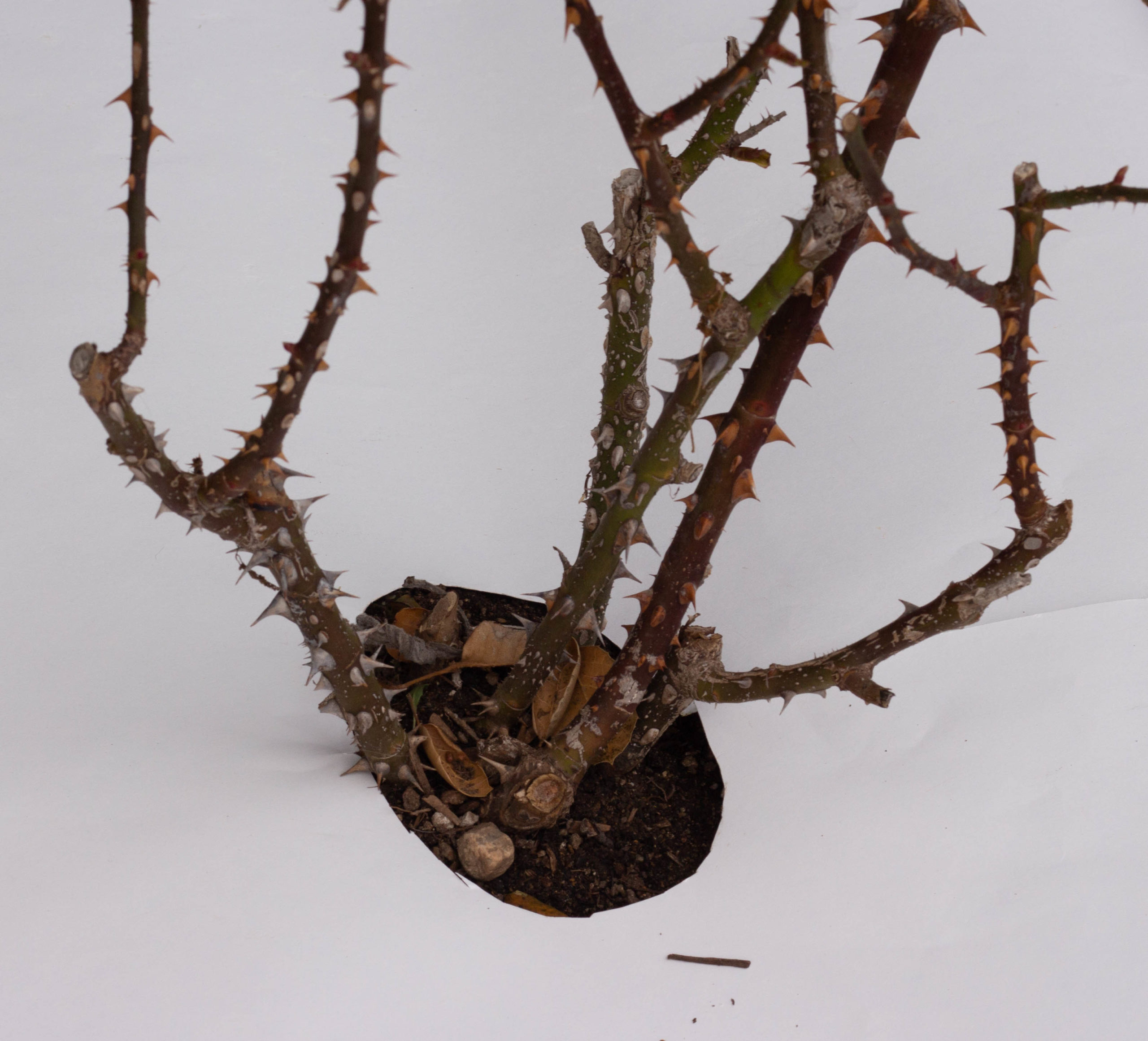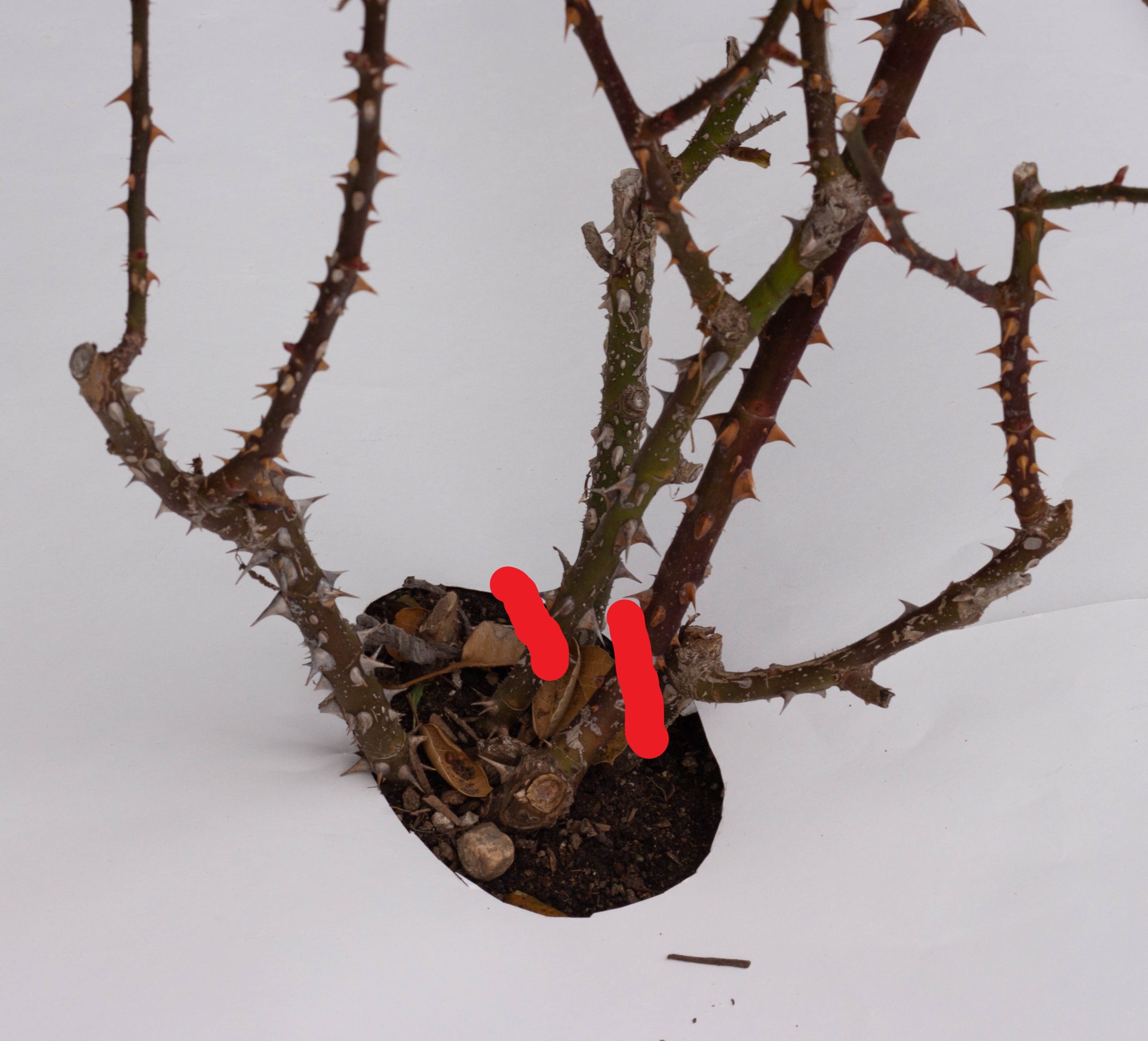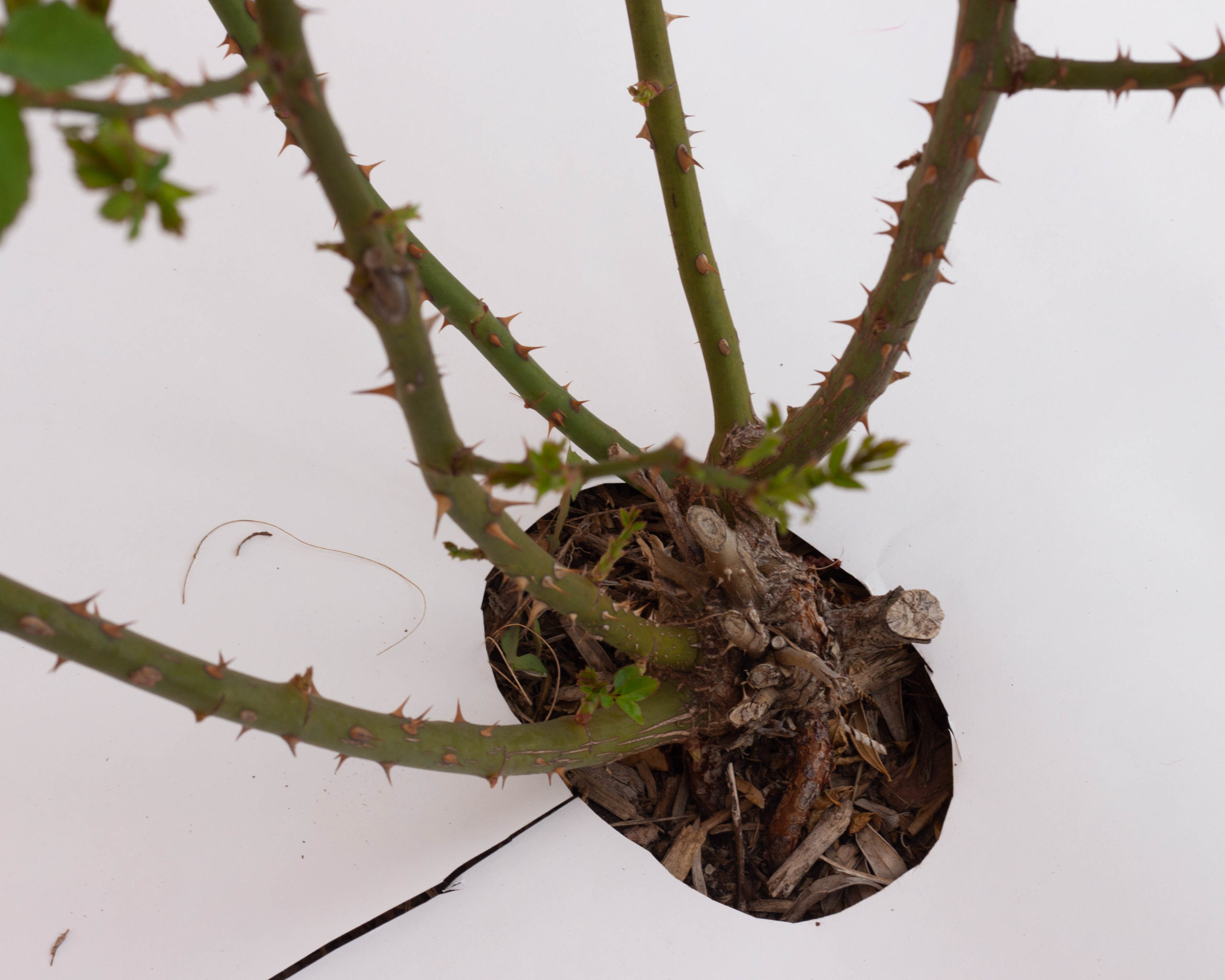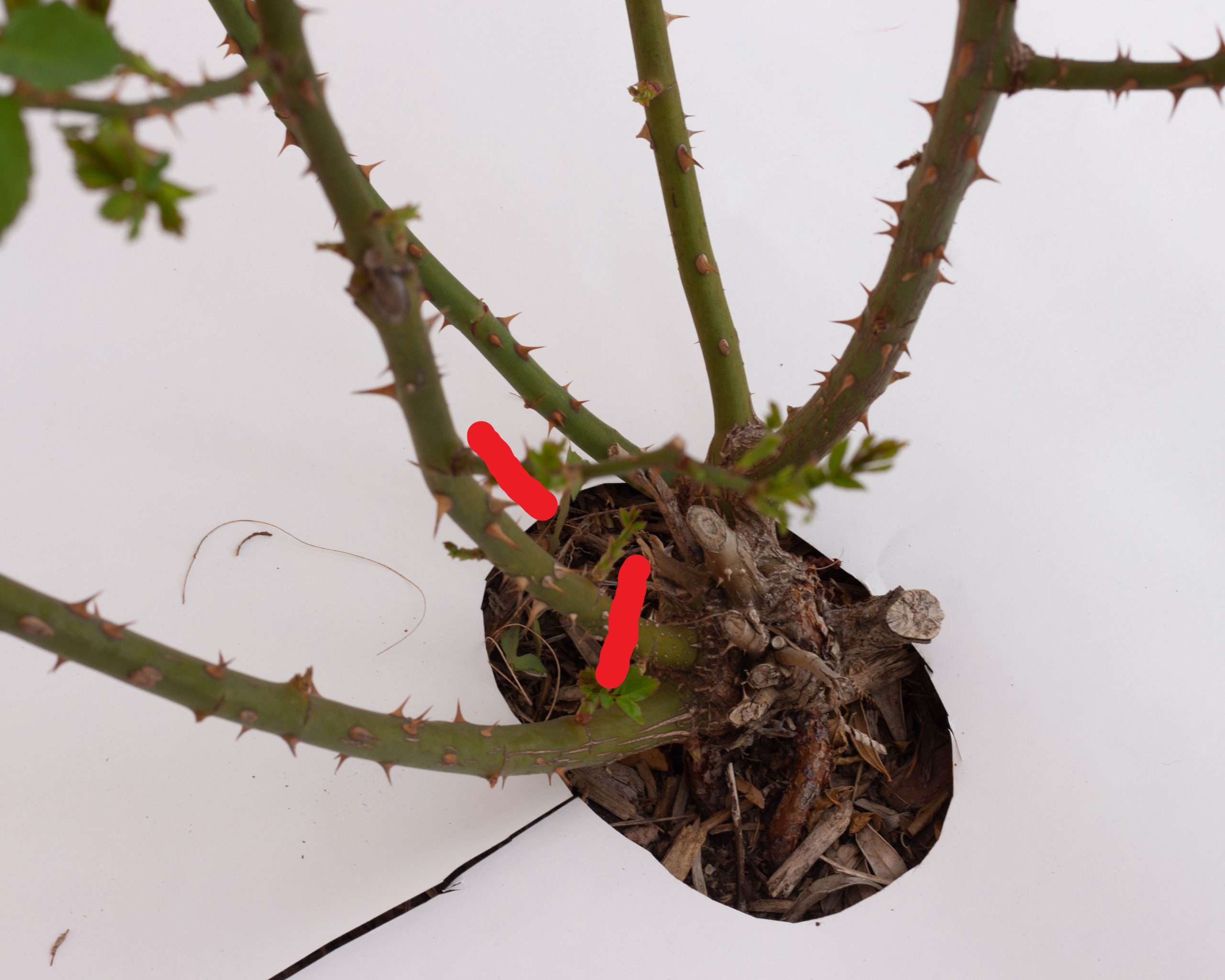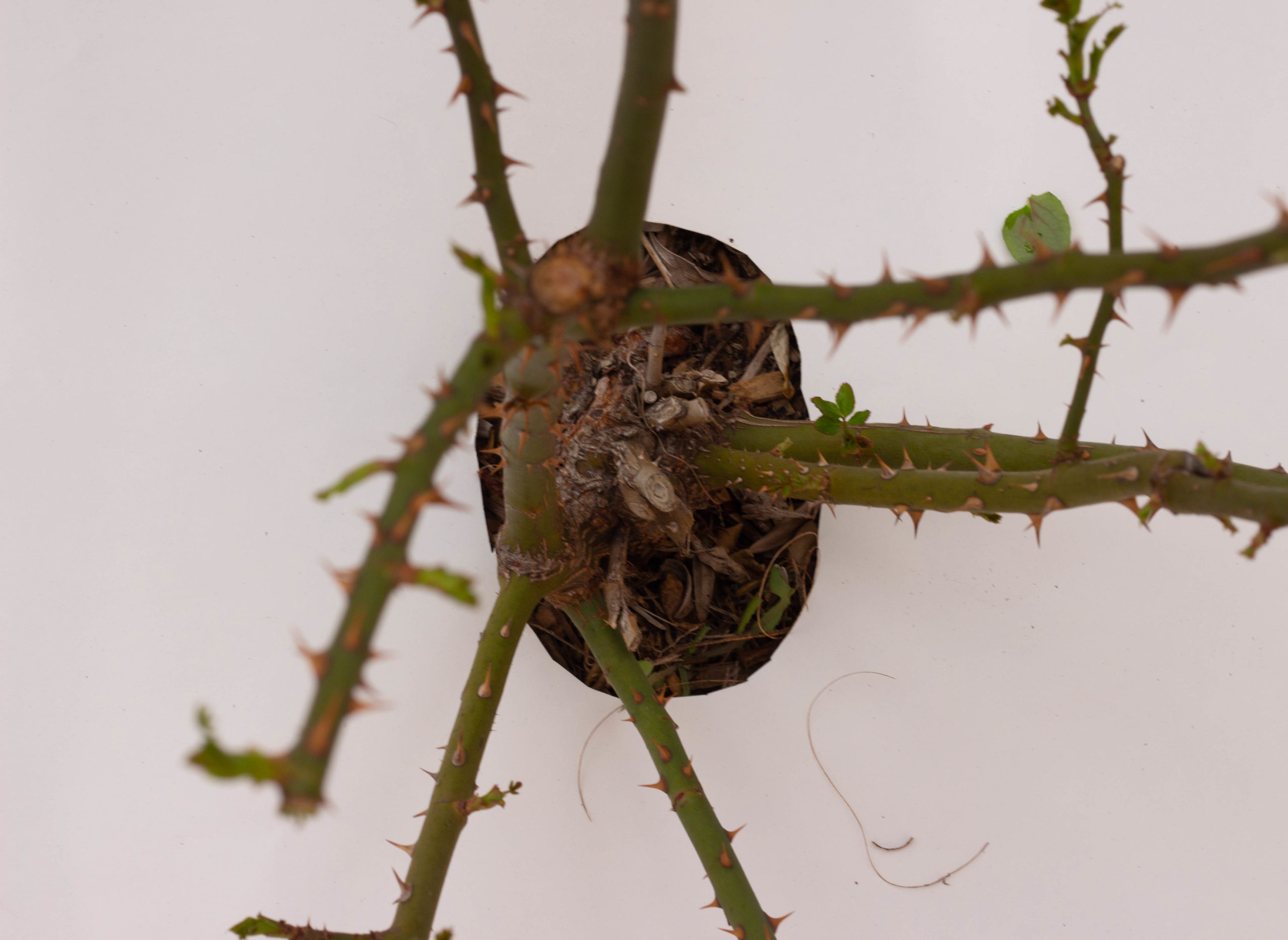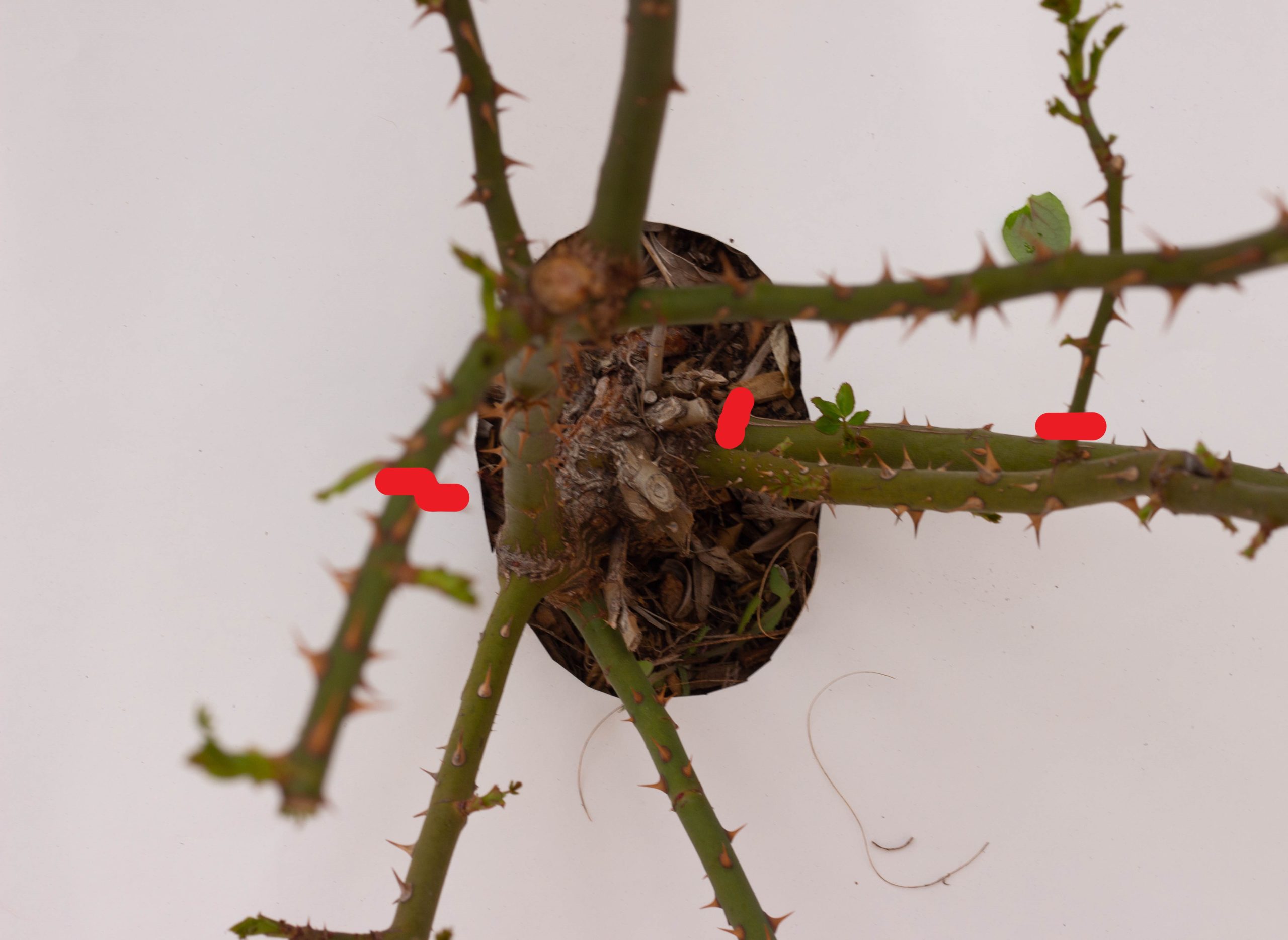Rose Pruning for Structure: An Illustrated Guide
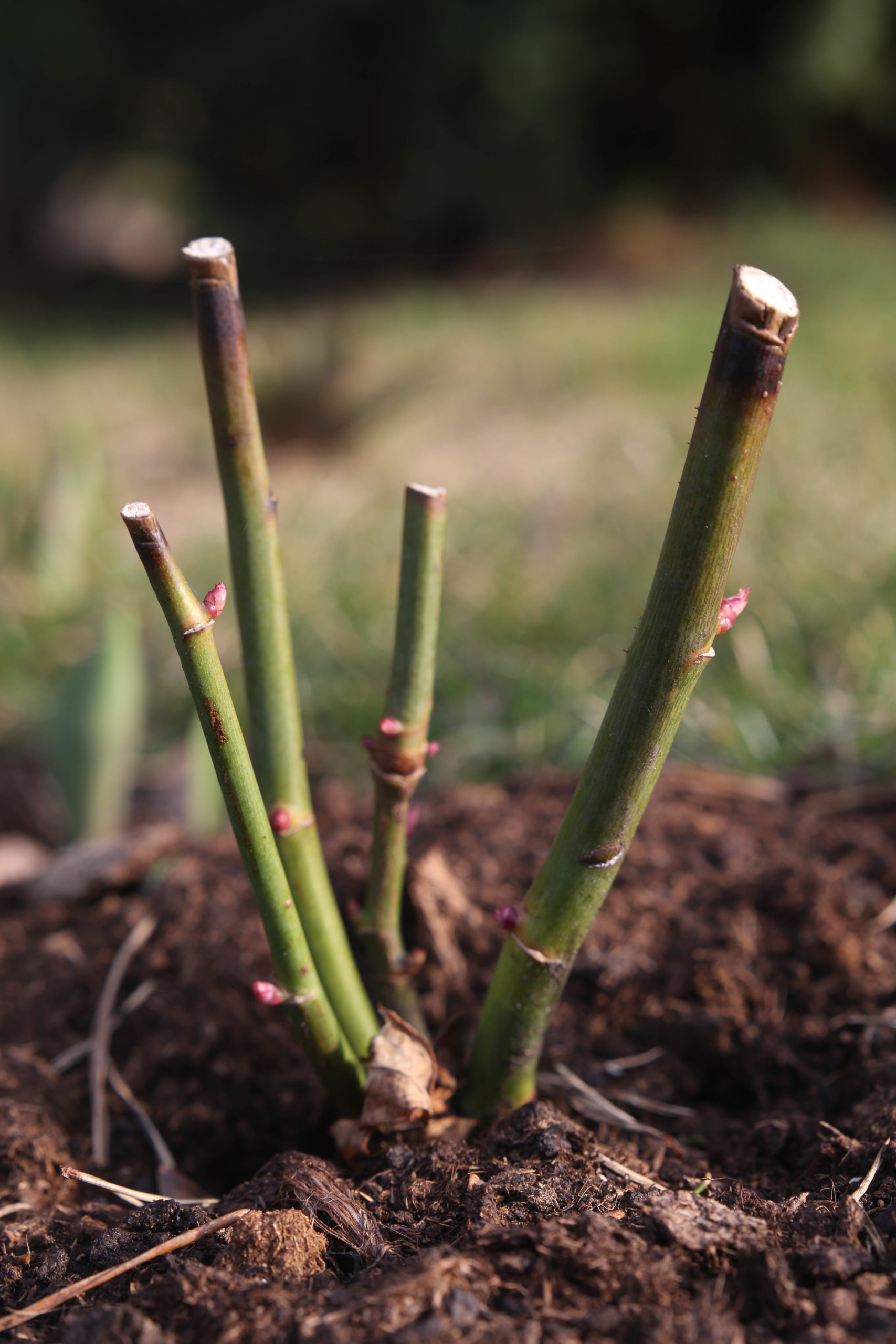
By C. Darren Butler and Ann Clary
What is structure as applied to plants and trees? It’s the arrangement of stems, including the spacing and relationship among stems, especially for long-term, larger, and permanent stems.
Hybrid-tea and grandiflora roses bloom on new growth. When pruning roses, it’s important to remove older stems that aren’t part of the plant’s permanent structure or that can be replaced by younger canes. This encourages new growth for blooms. Healthy roses respond to a reduction in total number of stems with fast-growing new stems and faster blooming.
Pruning is necessary for optimal blooming with hybrid teas and grandifloras which are usually grown specifically for their large flowers, and less important for other types of roses, such as shrub or groundcover roses that are grown more for mass displays of flowers that are often individually much smaller.
Rose pruning for structure is important for several reasons. Good rose structure directs most new growth out and away from center so rose branches and blooms don’t crowd each other. Unpruned or insufficiently pruned roses naturally grow with crossed and tangled stems, while roses pruned carefully for structure are more attractive. Wider spacing of stems encourages good air circulation, which can help to minimize the fungal diseases that are common with roses.
These examples illustrate various principles when pruning for structure.
Remove suckers
rose pruning, sucker
The green stem at right appears to be a sucker, meaning a new stem that arises from roots. Suckers usually grow quickly and vertically or even straight upward. In general, remove suckers as soon as they appear. If this is a grafted rose, stems arising from the sucker are unlikely to bloom true to variety, and the rootstock will prioritize growth of its own wood, which can weaken or result in loss of the desirable varietal wood.
Most modern roses are grafted, meaning that a known blooming variety is joined to the root system or “rootstock” of a different plant to provide more vigorous, hardy, disease-resistant, or otherwise superior roots. For own-root roses, retain suckers as desired for new blooming wood, to improve structure, or to increase size of the plant. If you don’t know whether your roses is grafted or own-root but you want to retain a sucker, watch the first blooms on the sucker carefully. If they aren’t true to variety or the sucker doesn’t bloom at all, it should be removed.
The very small stems at lower left appear to be crossing back toward the middle of the plant. Remove these to prevent a tangled and unattractive future structure.
Remove crossing and crowded branches
This rose has structural crossing and too many stems too close together at right. Removing the two stems entirely that arise from the center of the plant (2nd and 3rd stems from the right) resolves the unwanted crossing and provides a more attractive structure. Depending upon how important individual stems are for upper plant structure (not shown) removing the far-right stem and the 3rd stem from the right (both greener stems with V shaped upper sections) might be another good option.
Prune for an open center
Removing the curving stem at middle left (2nd stem from bottom of photo moving clockwise) would result in an attractive, open structure. As an alternative, the gardener may want to retain the stem for temporary blooming and remove it later during the growing season or at the next dormant pruning. Remove the small stem crossing the center of this rose from left to right. Tiny leaves at the base of the left-center stem appear to be new growth crossing back toward the middle of the plant, and if so, should be removed.
Select an attractive stem structure
Structure for this rose appears to be so confused and unattractive that it’s tempting to cut it back hard while the plant is dormant and start over. At minimum, remove one of the closely spaced parallel stems at right along with the 3rd nearby or higher parallel stem (slightly blurry). To encourage better structure, cut the stem at far left at its halfway point where the small new growth points left. The small stem at upper right is unattractive because of its 90-degree angle to other stems. Either remove this stem or cut it back to a node that will result in better or more-attractive new growth.
Selecting your tools will make your pruning job easier, and your protective clothing will minimize injury. Read our suggestions at Rose Pruning: Tools and Protective Clothing
Need some new roses? Here’s what to look for when buying container roses: Purchasing Roses in Containers: 4 Tips
GardenZeus has customized information for growing roses in your area. To get started, enter your zip code.
